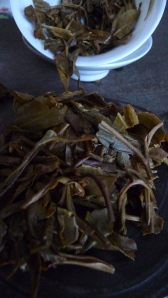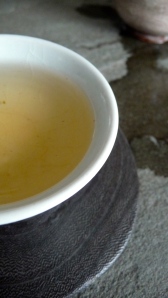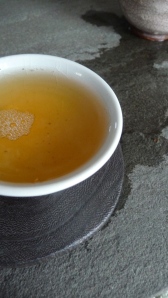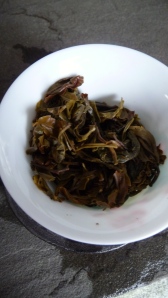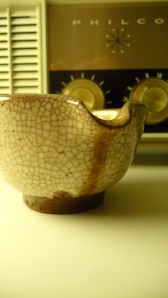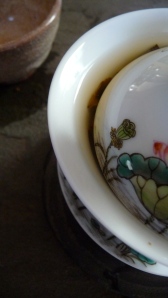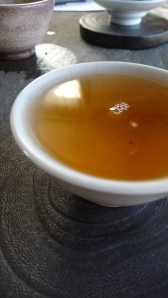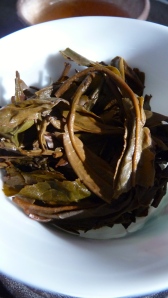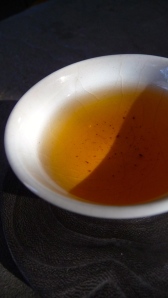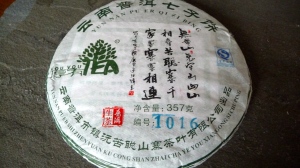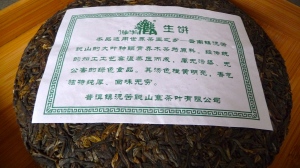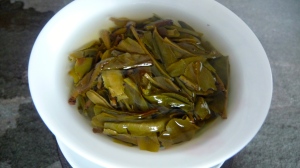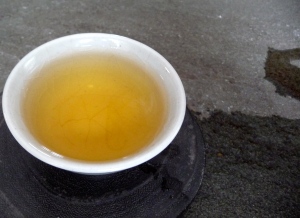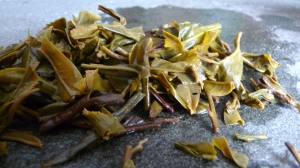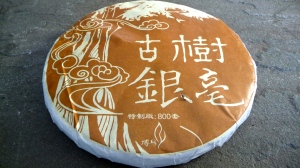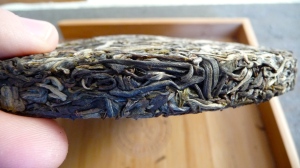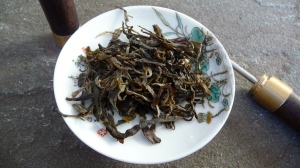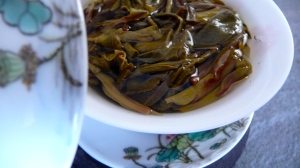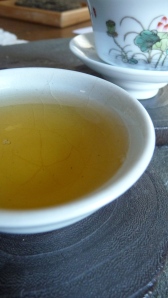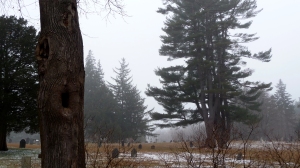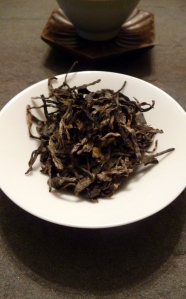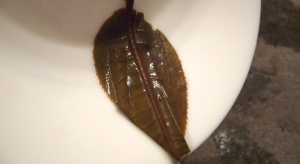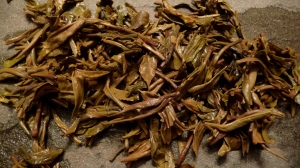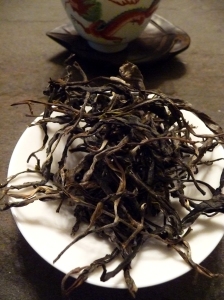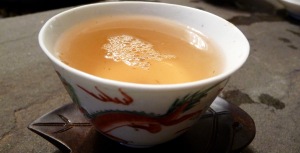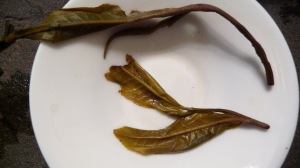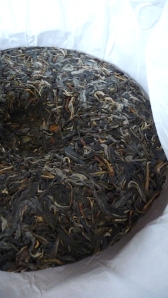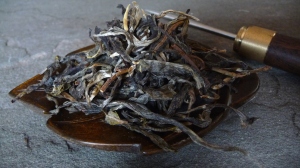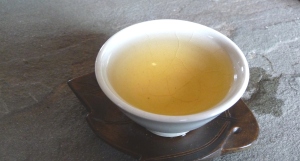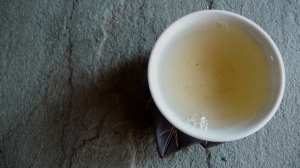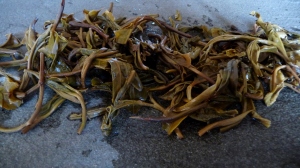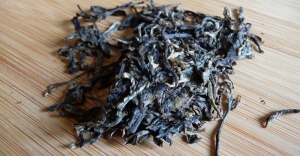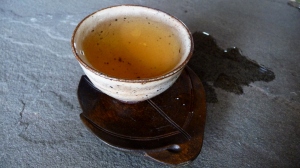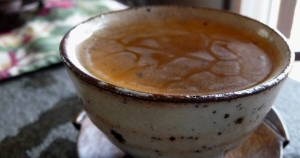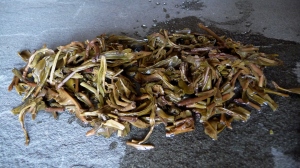My collective experiences with Meng Song region teas have not exactly been, ummm, outstanding. Most have produced insipid liquors leaving little impression in their wake. The others were just plain dull.
When I had requested a set of Yi He Cha Zhuang samples from Cream Of Banna it didn’t register, for some odd reason, that one of them was actually a Meng Song sourcing, the Liu Xiang. Needless to say, I wasn’t exactly champing at the bit to bring this one to the tea-table after re-reading the entry on the site and discovering its’ origin upon arrival of the package.
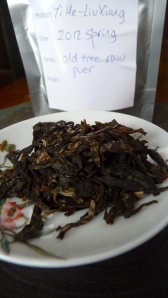
Fast foward to today.
Once again forgetting that the Liu Xiang is the Meng Song tea, I decide to steep a healthy bit of the sample. I do wonder, considering my existing bias, if this was to its’ benefit.
Sitting at the tea table, the dry nosing reveals a strikingly fresh and vibrant fragrance, though softer in expression than other teas of recent. Once humid, the leaf develops sweet aromatics which deepen the profile. A perceptible bitterness greets the sinus.
Decanted liquors develop from pale straw to heavier shades of gold across the first three steeps as the leaves expand to fill the gaiwan. I am using 9g of leaf to 120ml.
The kou gan is consistently gentle and balanced throughout the session, even as later steeps develop a poised se (涩) that fluctuates with returning honey sweetness.
As the Liu Xiang comes to life, the tongue feels invigorated and tingles, then becomes calm as the mouth is increasingly coated. A subtle nagging note of ku hovers in the arch of the soft palate, rushing into the sinus cavity upon swallowing broths.
Cooling sensations linger between steeps on the tongue, soft palate and sinus. A graceful tian wei provokes salivation. The throat feels warm, lubricated and comfortable; as well as the inside of the cheeks.
Considering the softness of its’ nature, the tea is surprisingly lively and far from limited in depth. The leaves give of themselves at length. Retro-olfactory sensations are exceptional. It feels full and balanced.
If I was to make a criticism, it would be that the tea did fall a bit short in corporeal sensations. It offers some weight at the brow, but nothing dramatic. The most significant aspect of its qi is the heightened physical alertness it provides in the mouth cavity. It really is difficult to explain in words, but once you experience it, you know it. For the record, I certainly find nothing wrong with this lightness of touch in a tea. If a drinker is looking for a physical work out, however, they are not going to find it here… at least as it behaves now.
As I finish the session and log on to the Liu Xiang entry… well, wait… Meng Song??!! “This is a tea that Yi He made last year from Meng Song gu shu. It’s actually a blend of autumn and spring teas, with about 60 -70 % spring tea.” – Cream Of Banna
While I am not exactly jumping on the Meng Song ship quite yet, it was a pleasure to discover a recent example that didn’t leave me feeling frustrated that I wasted both time and water. Coupled with a first session of the Qing Teng from Wistaria House the other day, it certainly provided with some food for thought.
